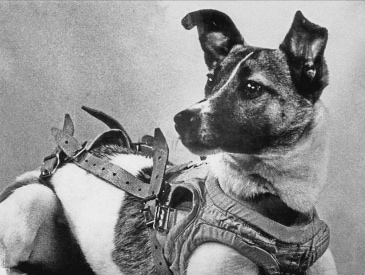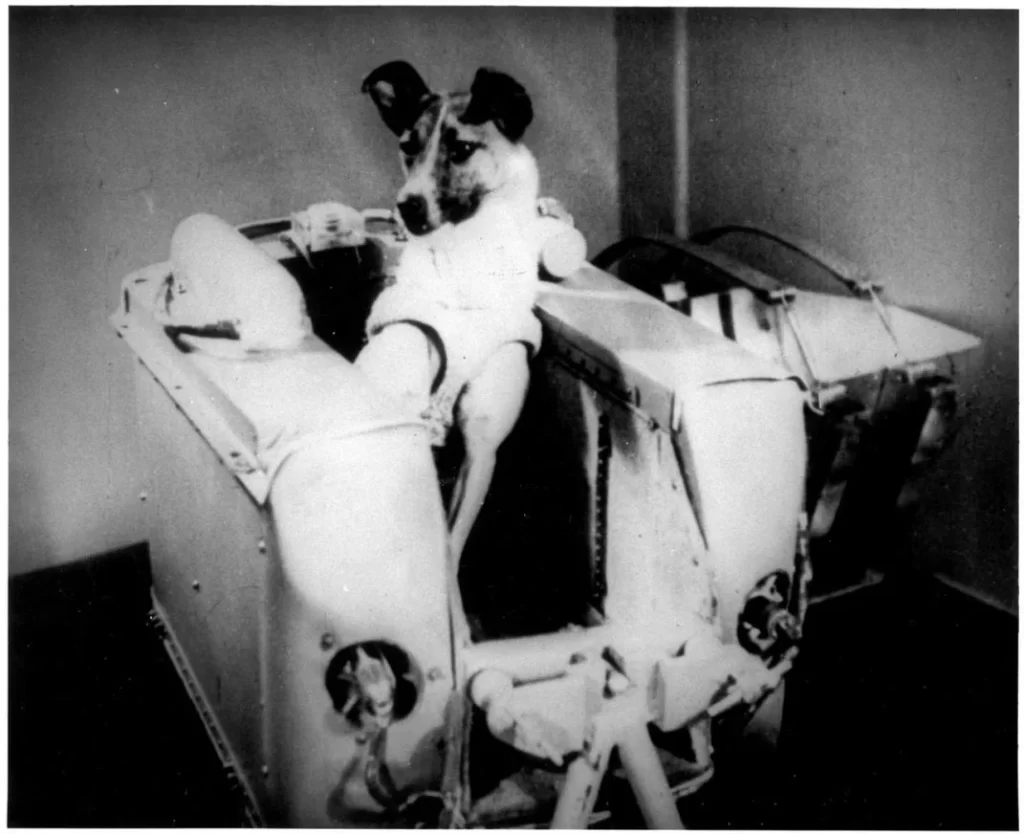Meet Laika – The First Dog In Space – AZ Animals
More Great Content:
↓ Continue Reading To See This Amazing Video
On November 3 1957, a Husky-Spitz mix named Laika would make history for being the first living animal to enter earth’s orbit. She was chosen by the Soviet space program to go on an involuntary 7-10 day mission into space, but the actual details of what occurred on this mission would not be revealed for decades. Laika would lose her life during this space expedition, but her actual cause of death was covered up for quite some time.
Laika is remembered to this day for losing her life for the sake of space research, so we think it is important to remember her and her story. Let’s introduce you to the incredible pup named Laika, and everything she experienced leading up to her space venture.
Get To Know Laika – The First Dog In Space

©
Before we dive into the details of Laika’s story, it’s important to have an understanding of who she was. Laika was a Husky-Spitz mix found on the streets of Moscow, Russia just a week before the Sputnik 2 launch. The Soviet Spaceflight Program was looking for female dogs to participate in their upcoming projects, and Laika was one of the many street dogs that were chosen. She was about 13 pounds and around 2-3 years of age when she was found, and was specifically chosen due to her even temperament and comfort around humans.
The Soviet Spaceflight Program was specifically interested in female dogs, as they were believed to be better suited for potential space travel. They were said to better tolerate being in small spaces due to their anatomical structure, and also seemed to have an easier temperament to work with. Though another dog was initially chosen to take that fateful flight on Sputnik 2, Laika was ultimately the one that boarded the ship.
Why Send Laika To Space?
At the point in which Laika was sent into earth’s orbit in 1957, humans had not yet ventured into space themselves. A Soviet astronaut named Yuri Gagarin would be the first person to make one orbit around the earth, but this would not occur until April of 1961. Laika was essentially an experiment for The Soviet to better understand how space travel effected the body, and to better prepare for human space travel in the future.
Before Laika was sent to space, there were still many unknowns when it came to space travel. It was initially believed that humans may not be able withstand long periods of weightlessness, so multiple space programs around the world were utilizing animal research to answer these questions. Laika was not the first animal to be used for space research, but she was the first animal to enter earth’s orbit.
How Did Laika Prepare For Her Space Travel?
One of the main reasons why Laika was chosen for the Sputnik 2 mission was due to how ideal she was for the training process. From the moment Laika was removed from the streets and made her way to the space program, she began her training for launch just a week later.
In addition to her training, she was also fitted with a monitoring device that attached to her pelvis area to alert them of any changes in vitals such as her heart rate, her breathing rate, and more. This allowed them to keep track of how she reacted to simulated changes in air pressure and loud noises leading up to the flight, so they could know if she was the right fit for the mission.
Once they knew Laika was the right one for the job, they begun the process of getting her accustomed to being in a tight space. Laika was moved to a “constricted travel space” three days before her flight to simulate the ship environment, and this allowed for a couple inches of movement. While this is impossible for a dog to get used to, it’s said that she tolerated the process fairly well.
What Was The Plan For Laika’s Space Travel?

©
We can’t know for sure what the intended plan for Laika’s space travel was, but we have learned more of the true details as the decades have gone by. We know now that Laika was never intended to survive her mission, and that she was sent on a one-way trip into space to gather the data reported from her internal monitoring devices. Laika was said to have been sent into space with one pre-flight meal and a 7 day supply of oxygen.
“I asked her to forgive us and I even cried as I stroked her for the last time.” – Biologist and trainer, Adilya Kotovskaya
While the space team knew she would never survive, the world was not aware of this. Soviet officials told the world that Laika would return to earth safely about 8 days after the launch, but biologists that trained Laika said they knew this was impossible at the time.
Once more concern from the public grew about Laika’s well being in space after the launch, the Soviet then released a statement saying they planned to feed Laika a poisoned meal in order to prevent her from the trauma of re-entering earth’s orbit. The official statement from the Soviet space team was that Laika lived for about a week before she was humanely poisoned, and that much of her travel was stress free and non-eventful.
How Did Laika The Space Dog Actually Die?
As we mentioned above, it was reported by the Soviet Spaceflight Program that Laika died peacefully in space after eating poisoned food. Though it was public knowledge that Laika had already died at this point, the ship also disintegrated during re-entry on April 14, 1958. It wasn’t until 2002 that we learned the truth about Laika’s space venture and her death.
Forty-five years after the launch of Sputnik 2, Russian scientists finally revealed that Laika did not survive for a week in space. According to the sensors that were attached to Laika’s body, she actually died just a few hours after the launch. It’s believed that the Sputnik’s cooling system did not function properly during her flight, and that she died from overheating in the ship during the launch process. Laika’s body was also never recovered, as the ship was destroyed as it re-entered the earth’s atmosphere months later.
“The more time passes, the more I’m sorry about it. We shouldn’t have done it. We did not learn enough from the mission to justify the death of the dog.” – Biologist and trainer, Oleg Gazenko
Remembering Laika
It has been just about 66 years since Laika’s trip into space, but she is still remembered to this day. A statue of Laika stands at a cosmonaut training facility at Star City in Russia, another at the training facility in which Laika was trained, and she is also included in another monument in Moscow.
“Without animal testing in the early days of the human space program, the Soviet and American programs could have suffered great losses of human life. These animals performed a service to their respective countries that no human could or would have performed. They gave their lives and/or their service in the name of technological advancement, paving the way for humanity’s many forays into space. ” – Statement from NASA
Though the topic is controversial for many, the use of animals for research purposes is still prevalent around the world. The Russian space program has continued to launch dogs into space, but they now aim for the safe recovery of each dog back to earth. There have still been canine losses since Laika’s launch, but we hope that the well-being of the dogs are now considered.
Up Next:
Ready to discover the top 10 cutest dog breeds in the entire world?
How about the fastest dogs, the largest dogs and those that are — quite frankly — just the kindest dogs on the planet? Each day, AZ Animals sends out lists just like this to our thousands of email subscribers. And the best part? It’s FREE. Join today by entering your email below.






